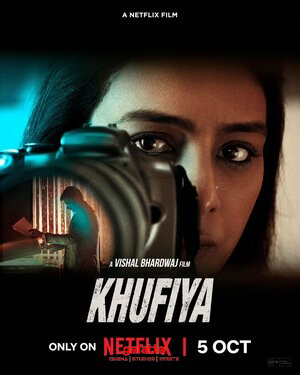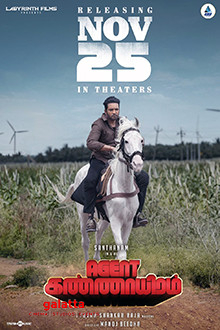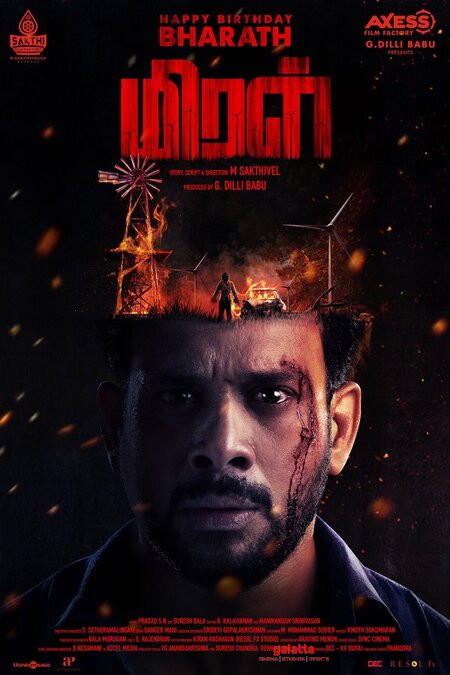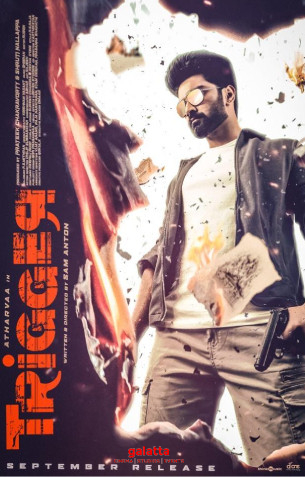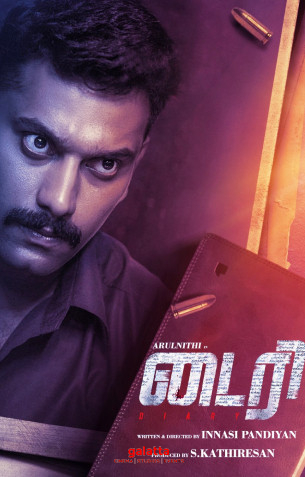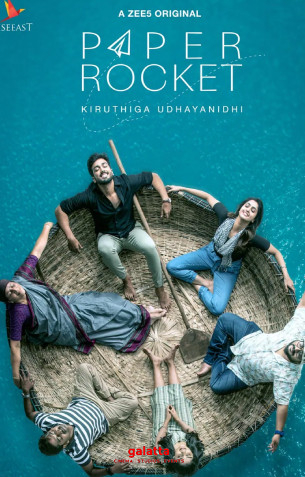Chaaver Movie Cast & Crew
Tinu Pappachan used to assist Lijo Jose Pellissery, and in his films, you get the same sense of a slightly surreal masculine world gone mad. Chaaver is a routine "crime and punishment" story, but what's fascinating about the film is its structure. The stylised, ritualistic, karmic narrative unfolds like a performance of Theyyam, a stylised ritualistic dance form performed mostly by men. In Chaaver, the style is the substance. The men in question in this Kannur-based story are Ashokan (Kunchacko Boban), Thomas (Anuroop), Asif (Sajin Gopu), and Musthafa (Manoj KU). They come from different religions, but merge under the umbrella of a Leftist political party. They are puppets manipulated by the System, and we see this in the imagery of these men boxed inside a Tata Sumo for the most part, while being dwarfed by gigantic trees, a gigantic sky, and even a gigantic gate. They have been given orders to kill someone, without any reason / explanation being provided.
The man to be killed is also defined only by his community: "low caste" is what people say about him. And slowly, the most beautiful thing happens. A regular story of this nature would shift back and forth between the hunters and the hunted, the cops and the killers. But Chaaver knows that that is a story we have seen a hundred times. So, instead, the film spends most of its time with the killers, the men in the Sumo – and the narrative turns into something abstract. We are burdened with "plot" so much of the time in so many movies that it is a breath of fresh air to just sit back and watch these men, these creatures, waiting to be cornered. That they will be cornered is in no doubt because this has been visualised in the very first scene, when a rat approaches a cockroach. At first, we think we know which one is the predator, which one is the prey. But in an instant, the tables are turned.
An innocent medical student Arun (Arjun Ashokan) finds himself trapped with this group of men, and he, too, is an abstraction: a "good guy", and nothing else. What tells us when a story is underwritten, and when the stick-figure characters are intentionally so? It's the making, of course – where even the murdered man turns into a chalk outline. People wail for him, but we stay dry-eyed because it all seems to be happening in an installation at the Museum of Modern Art. Jinto George's orange/blue cinematography, Justin Varghese's haunted-house music, and Ranganath Ravi's eerie sound design are entirely one of a piece. They keep hinting at how we are all trapped in the horror movie we call life. At one point, Arun is framed from the inside of a house, trapped between the doorway. It is as though the house is looking at him. We only think we can escape, but in reality, we are all doomed.
No attempt is made to de-puppet-ise these men, these wanderers in the maze of life who desperately search for the destination. We may get a scene where Thomas talks to his wife (they have an infant son), or another scene where Musthafa's wife is questioned, but there is absolutely no sentimentalisation. These abstracted women are as much part of Tinu's world as the migrant workers who speak Bengali and the dogs and lizards he keeps showcasing: they’re living creatures but just about that. They are in the dark about what their husbands are doing, just as their husbands are in the dark about what the puppeteers are doing. Only the character played by Sangeetha, a former teacher and the widow of a Communist party leader, gets some bit of dimension.
She is Arun's mother, and she is not the kind to sit at home and weep. She is a puppeteer, too. Cops snap to attention when she enters the station, and she coolly walks away after performing an act of rescue. This, I suppose, is the good side of party politics, where strings are pulled for the good of people. But this act of rescue, again, is not dramatised, and neither is the death of a young woman. Another movie might have chosen to horrify us with this loss of life, but in Chaaver, she is just collateral damage. Shit happens! This woman, too, is a victim of all the puppeteering around her, like Arun's poor pharmacist friend. The film keeps building atmosphere instead of building characters, and at times, it approaches pure cinema: it takes genre material and strips away all the genre tropes, trading excitement for atmosphere. Even the inevitable (and sometimes excessive) slo-mo shots become part of the stylisation of these gradually broken people reflected in broken mirrors.
And Theyyam is all around. It's in the redness of ritual, and it reflects the ritual of killing without conscience. In one of the most startling images in Chaaver, a man whose wish was to perform a Theyyam part is surrounded by swirls of red clouds, as though drowning in a pool of his own blood. I was equally dazzled by another artful spurt of blood, this time made to look like the real thing. The last thirty minutes of this two-odd-hour film is where the director's hold on his material slips. From the abstract, things become very literal. We get a long and routine shootout, but there's a terrific touch of the men with guns being faceless (as in, they are masked). They, too, are puppets being strung along by the System, and you could equally make Chaaver with them as the protagonists who have been given orders to kill without a reason / explanation being provided.
No actor stands out, and yet everyone fits in. Arun loves watching Theyyam, but little does he know that he is going to find himself inside a "performance" – this movie – that is equally stylised. An early sequence cuts back and forth between Arun and Musthafa. It is like cutting back and forth between two worlds of "good" and "evil", with Arun in an auto filled with schoolkids and Musthafa in a Sumo filled with killers. Kunchacko Boban gets a big actorly moment when his character is asked where he is from. This is one of the few times the writing nudges us towards a melodramatic revelation. But when we get the answer, it is as moving as something can be in this cold universe. Does it matter where he is from? He could well be that migrant worker who speaks Bengali. He is from all over.
Formal filmmaking is not for every taste, and Chaaver is not perfect. But it does most of what it sets out to do, especially if you think style is a valid form of substance. In his terrific book Cinema Speculation, Quentin Taratino talks about Hitchcock's 'cinema-first, camera-first' style. He says: "The normal Hollywood movie sought for the audience to ignore the camera. Better for you to commit to this exercise of wide awake dreaming, if you forget you are watching a movie. So to emphasize or highlight the camera or camera movement was to call attention to the fact that the audience was watching a movie." This theory has been much abused in practice, yes. But here, the acting is naturalistic and the making is stylised, and this dissonance never allows us to forget we are watching a "performance". Like in Theyyam, the artifice becomes its own kind of reality.


